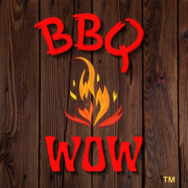Gourmet Cooking - Basics
The ultimate “How-To”. Whether you’re just getting started or have been cooking for years, this section will provide you with helpful hints and tips!
Table of Measure
- 3 teaspoons = 1 Tablespoon
- 16 Tablespoons = 1 cup
- 8 oz. = 1 cup
- 1 stick of butter (margarine) = 8 Tablespoons
- 1/3 cup = 5 Tablespoons + 1 teaspoon
- 2 cups = 1 pint
- 4 cups = 1 quart
Common Food Equivalents
- 1 lb American or Cheddar Cheese = 4 cups grated
- 1 lb All Purpose Flour = 4 cups sifted flour
- Juice of 1 medium lemon = 2 Tablespoons
- 1 lb of Granulated sugar = 2 cups
- 1 lb of Brown Sugar = 2 1/4 cups firmly packed
- 1 lb of Confectioners’ Sugar = 3 1/2 cups sifted
- 1 lb Shelled Pecans = 4 cups Nut Meats
Terms Used in Cooking
- BLANCH = To pour boing water over food to loosen skin
- DEGLAZE = To add liquid to a hot pan in order to release the carmelized bits on the bottom of the pan
- DREDGE = To sprinkle or coat with flour or other fine substance
- MARINATE = To allow food to stand in a liquid to soften or add to the flavor
- SAUTE = To cook in a small amount of hot fat
- SCALD = To bring to a temperature just below the boiling point
- SEAR = To brown very quickly with intense heat
- SIMMER = To cook slowly over very low heat, at a temperature of about 185 degrees
- TRUSS = To tie fowl or other meat with metal or wooden skewers to its shpe during cooking
Helpful Cooking Hints
- When pan frying or sauteing always get the pan hot first then add oil or butter. This prevents meat and eggs from sticking to the pan.
- Never let meat touch side of another piece while they cook, or they will stew instead of saute.
- Brown red meat quickly, uncovered.
- Brown poultry slow, covered or uncovered.
- Never pierce meat when browning as this causes the juice to escape. ALWAYS USE TONGS
- Frozen meat can be cooked as soon as it is soft enough for juice to run.
- To keep eyes from watering, chop onions next to a gas flame on a gas stove or cut onion in half and rub lemon juice on the onion.
- Never carve meat or poultry right after in comes out of the oven or off of the grill. Let the meat relax for several minutes to increase tenderness. (10 minutes for Steak, 20 minutes for Roast or Turkey)
- Beef should be well marbled and very bright red with white fat.
- Chicken should have fat as close to white as possible.
- For best results, meat should be at room temperature before cooking.
Cutlery Tips
Choosing the Right Cutlery
- Feel the grip. It should feel comfortable and balanced in your hand.
- Check the blade. The best are made from high carbon steel because they hold their edge longer, but require maintenance. Ceramic blades are very sharp but be can break easily.
- Check for strength. Good knives are ones that the blade runs from the tip of the knife through the back of handle.
Knife Types:
- CHEF’S KNIFE – comes in 8, 10, or 12 inch lengths. They are used for chopping, dicing, and all purpose.
- CARVING KNIFE – comes in 8, 10, or 12 inch lengths with a pointed blade. They are used for carving and slicing meat and poultry.
- BREAD KNIFE – has a long serrated edge. They are used for slicing foods with a tough crust or skin and a soft interior such as bread, cake, or tomatoes.
- UTILITY KNIFE – has a 6 inch blade. They are used for slicing or halving fruits and vegetables.
- BONING KNIFE – comes in 4 or 8 inch lengths. A long blade that tapers at the end. They are used to seperate the meat from the bone especially in hard to reach areas.
- PARING KNIFE – comes in 3 or 4 inch lengths. They are used for peeling, paring, trimming and other small scale slicing and dicing.
- MEAT CLEAVER – has a large heavy rectangular blade. They are used for hacking through cuts of meat.
